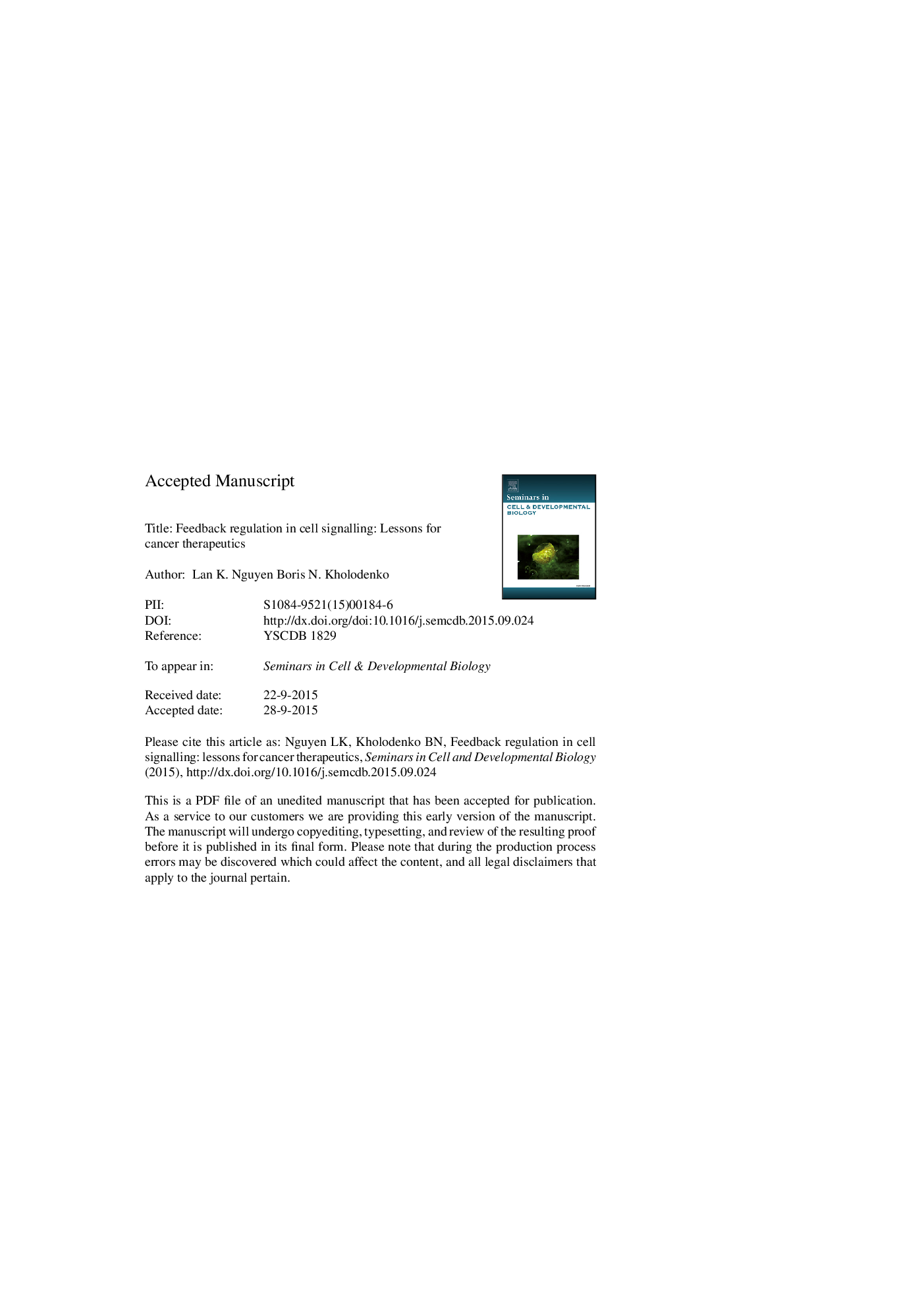| Article ID | Journal | Published Year | Pages | File Type |
|---|---|---|---|---|
| 8480192 | Seminars in Cell & Developmental Biology | 2016 | 26 Pages |
Abstract
The notion of feedback is fundamental for understanding signal transduction networks. Feedback loops attenuate or amplify signals, change the network dynamics and modify the input-output relationships between the signal and the target. Negative feedback provides robustness to noise and adaptation to perturbations, but as a double-edged sword can prevent effective pathway inhibition by a drug. Positive feedback brings about switch-like network responses and can convert analog input signals into digital outputs, triggering cell fate decisions and phenotypic changes. We show how a multitude of protein-protein interactions creates hidden feedback loops in signal transduction cascades. Drug treatments that interfere with feedback regulation can cause unexpected adverse effects. Combinatorial molecular interactions generated by pathway crosstalk and feedback loops often bypass the block caused by targeted therapies against oncogenic mutated kinases. We discuss mechanisms of drug resistance caused by network adaptations and suggest that development of effective drug combinations requires understanding of how feedback loops modulate drug responses.
Keywords
PI3Kv-raf-1 murine leukemia viral oncogene homolog 1MST2Lats1RAF-1mTORC1IEGsDUSPsSOSRKIPCDKIRSERKAktNetwork analysisfeedback regulationforkhead Box ODual specificity phosphatasesInsulin receptor substratesFoxOphosphoinositide 3-kinaseMEKMathematical modellingMammalian target of rapamycin complex 1Raf kinase inhibitor proteinprotein kinase B (PKB)son of sevenlessImmediate early genesextracellular signal-regulated kinaseGab1
Related Topics
Life Sciences
Biochemistry, Genetics and Molecular Biology
Cell Biology
Authors
Lan K. Nguyen, Boris N. Kholodenko,
